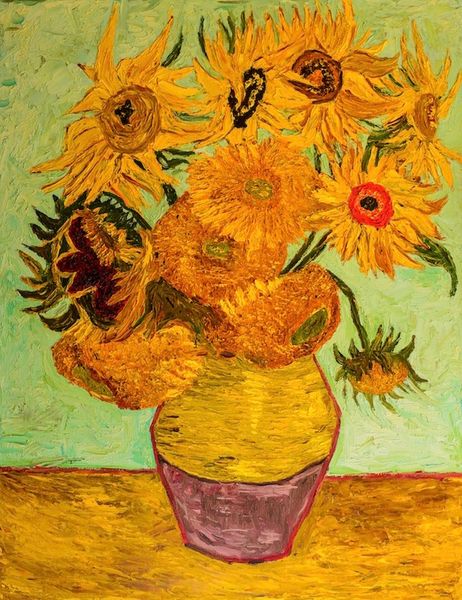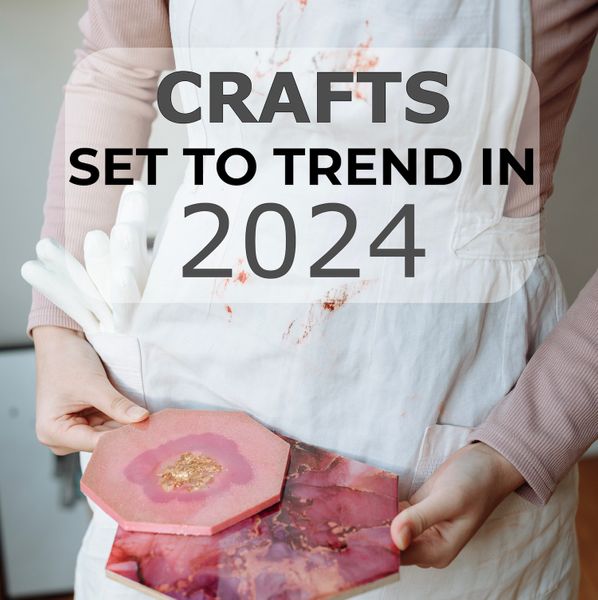Sophie Wheatley of All Things Felt & Beautiful takes needle felting to the next level by making strikingly realistic contemporary pet portraits. Our lucky team member Suki got to attend one of her workshops recently (read about it here) and it sounded AMAZING, so as it is Wool Week we just had to ask Sophie a few questions....
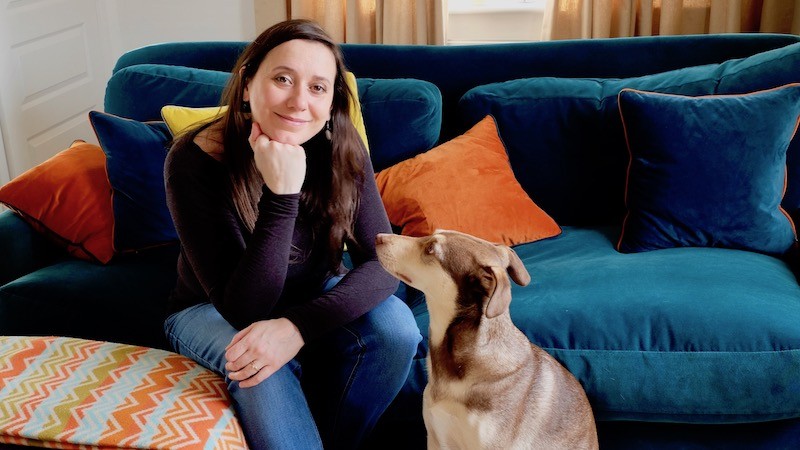 Wool artist Sophie Wheatley with her dog Will
Wool artist Sophie Wheatley with her dog Will
How did you first get into working with wool?
By chance I happened to watch a TV program with the fabulous Kirstie Allsop who was making an adorable needle felt robin as part of a Christmas Scene.
I was so enchanted by how simple and charming the process looked, that I immediately bought a couple of felting needles online and strode out one afternoon to collect tangled wool from fences in the local fields. After a quick clean up, I got to work without a clue what I was doing. And I never looked back.
I loved it. It’s a very addictive craft and intuitive once you understand how the wool works. It feels like magic.
I started off making odd little bunnies and quickly moved onto making dogs. Within a few months I’d set up my company All Things Felt & Beautiful selling little bits and pieces in a friends shop and I had my first dog commission not long after.
 Wool art: pet portrait by Sophie
Wool art: pet portrait by Sophie
And when did you become such an expert or how did you develop your skills to the high level that you are now at?
I’m obsessive about details. I saw a huge improvement in my progress when I started paying attention to tiny details - translating what I see into my work.
Looking for that special something – in my case right now - that makes a good portrait. This might be capturing a particular characterful look, be that a pose, head tilt, sparkle in the eye or even choosing a wool that’s just right in colour and texture. All these little details add up to making a great piece.
What inspired you to move from the more traditional needle felt sculptures to the unique portraits?
It all comes down to the detail again. I find that in a portrait I have the space to pack lots of individual detail in to a face or composition. The colours I use (surprisingly many) are really exciting to me after six years of using a rather more muted palette making models of dogs.
I’ve also learned to look for a lot of character in a dog’s face and I like to capture that both formerly in my models, but I’ve found there is so much more scope for this in portraits. I’m finding it really enjoyable.
Examples of Sophie's needle felt 3D dogs
They have been sold all over the world and featured in many magazines, including The Style Magazine in The Sunday Times.


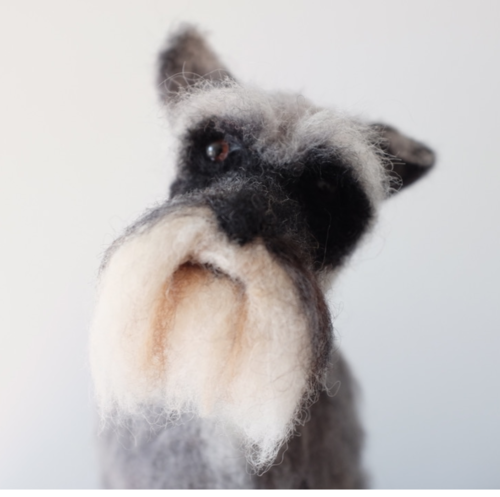
How do you select your wool? And is the quality of the wool and colours really important?
The project I’m working on will determine which type of wool I use. Needle felt pictures and portraits are best made with carded batting that isn’t too coarse. And I typically work with shorter fibre wools ranging from 17-27 microns thick which I buy from a variety of suppliers I’ve come to like.
If I’m working on intricate details, I’ll choose carded wool that is fine, like a carded merino. I might just use a few slivers of the fibre to create an effect so yes quality is important. You want to know that your wool is going to do what you expect it to and needle felt in a even way.
But choosing a quality wool and the right colour can be tricky online, so it’s invaluable to get a sample pack from different suppliers before you commit to buying a large amount. This means you’ll always buy the right colour you need.

What is the most unusual/memorable piece that you have been asked to create?
I was approached a few years ago by a children’s book author and illustrator who commissioned me to make the character in her series of books.
It was a wild orange-eyed white fox/cat creature and such a thrill to bring to life from the page.
She commissioned it so that it would accompany her on a book tour of the United States. I loved that fact that she could have it as her mascot and people would see her character in real life.
 Needle felt portrait workshop
Needle felt portrait workshop
You teach this craft and pass on your expertise, but is it something anyone can do or do you need to have some artist skills already (painting, drawing etc)?
One thing I’m passionate about is communicating that you don’t need any artistic skills to needle felt.
The way I teach, I focus on making the drawing part really simple using various tips and tricks to easily transfer a picture onto fabric.
I like the most creative part of my class to be the needle felting and not for someone to worry whether they can draw or not.
Basically if you can hold a pen you can needle felt. It’s a very forgiving craft. It doesn’t go off, dry out and you don’t have to follow any patterns to make it work. It’s liberating and I would encourage everyone to at least have a go.
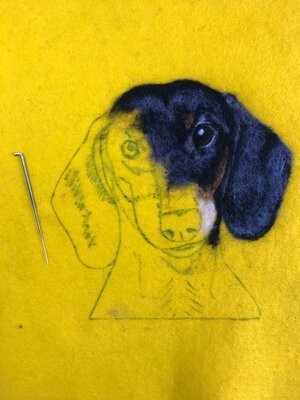 Work in progress
Work in progress
What is so great about teaching?
What I love most about teaching is watching students go through a process of positive transformation in class.
At the start often people feel apprehensive, not quite sure what to expect and worried that they aren’t artistic enough.
But with lots of encouragement and guidance by the end they leave thrilled with what they’ve made. Beaming with pride and hooked on needle felting.
My motto is “everyone leaves smiling”.
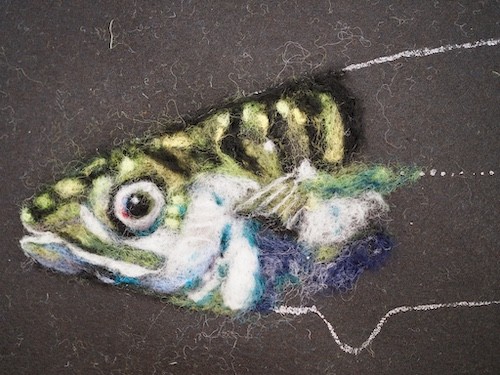
Any tips for someone getting started in this craft?
Don’t over complicate it. With the plethora of needles and wool batting (best for pictures) available these days it can be hard to know what to buy.
Have a project in mind. Start with one or two felting needles and just the wool colours you need to complete your project. Don’t get too caught up in the different breeds of sheep wool, but go by the colours you need instead.
If you can, I’d always suggest going to a workshop as you get an immediate grasp of the basics with a professional and often saves you time if you opt for the trial and error option.
Either way, it’s a craft that’s simple to grasp and you’ll soon be well on your way. Forgetting any worries you have about getting started.
 Painting with wool (not just for pet portraits!)
Painting with wool (not just for pet portraits!)
Sophie runs a series of workshops in Warwickshire, Oxfordshire and Gloucestershire, plus she also teaches online - if you're inspired to have a go (you really should!) you can take a look at her courses here.
Plus, don't forget to read our review of one of her workshops on our blog to get a feel for what you can really expect.

